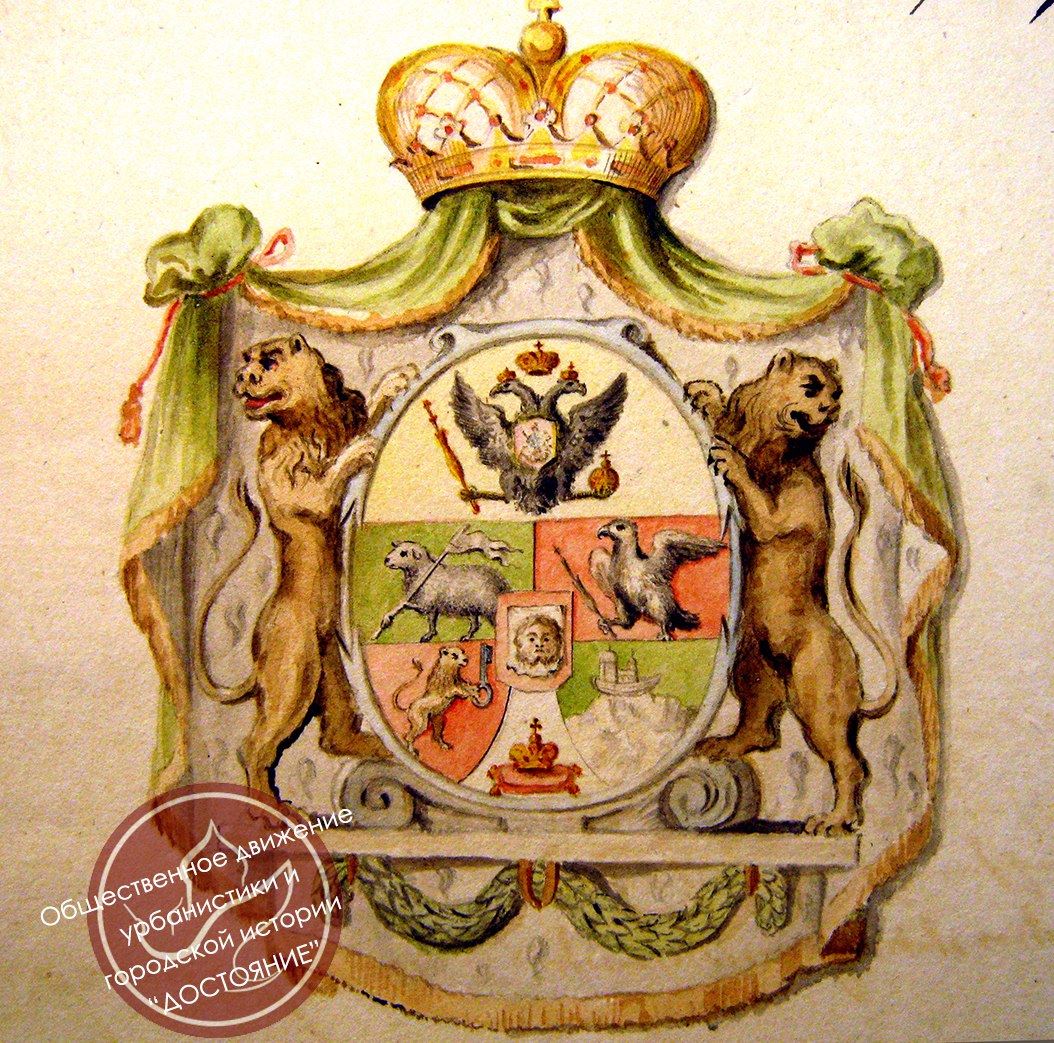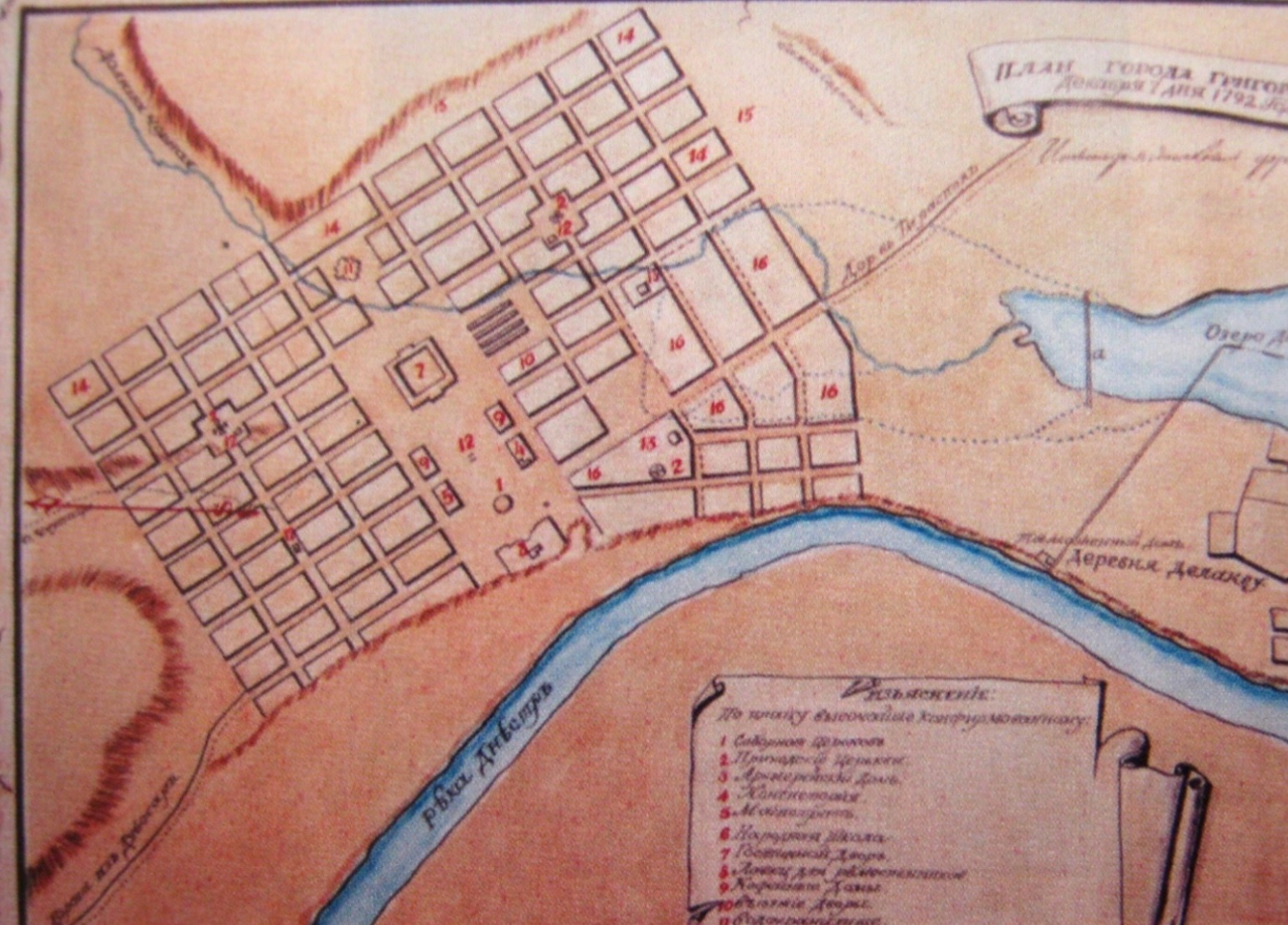Grigoriopol History
Grigoriopol was founded in 1792 by the Decree of Catherine II.
Armenian settlers were the first inhabitants of the town.
There are documents evidencing two versions of the town name origins.
According to one legend, Prince Gregoriy Potemkin ordered to name the new city in honor of the angel for whom he was named.
Another version has him ordering the city to be named in honor of St. Gregory the Enlightener, the most important saint of all Armenia.

Grigoriopol Coat of Arms
Source: Social movement of urban history "Heritage"
|

City Plan by Francois Sainte de Wollant
|
According to the 11th volume of the military statistical survey, the city was built in the lowland valley of the left bank of the Dniester River,
near the junction of the 3 ravines - Cherina, Chernago and Bezimennaya, it was surrounded by fairly large stony elevations.
The Dniester River washes the western part of the city that is covered with gardens and orchards.
There is a sandy island in the Dniester river across the town. It is 200 "sazhen" long (or 470 yards).
It is possible to cross the river near this island during hot summer days, when the water level is low.
There is a ferry nearby along the river. The ferry could lift up to 150 poods (or 5,417 lbs). The width of the river at the crossing is 80 sazhens (or 187 yards), the depth is 2 1 / 2 sazhens (or 5.8 yards).
The city's land is about 16075 dessiatins (1 dessiatina equals 13066 yards), of which 5,864 dessiatines are the town's pastures, forests, orchards and buildings, and 10211 dessiatines are arable fields and hayfields.
The number of residents is 2194, of which 2015 are women.
In 1799 there were 3435 residents in the town, in 1887 the population grew to 6165.
In 1897, there were 7,605 people in the city (3,740 Moldovans, 1,832 Russians, 832 Jews, 707 Ukrainians, and 406 Armenians).
According to The Encyclopedia of Jewish Life Before and During Holocaust: A-J, "Jews probably settled with the founding of the town in the late 18th century.
The Jewish population was 832 in 1897. During the Soviet period there were 796 Jews (of the total pop. of 8,876) in 1926, and 562 in 1939."
By the 1930s Grigoriopol became a significant trading center in the south of Russia.
The main demographic of the city's inhabitants were farmers, but there wer also trades (primarily tanneries).
The incoming Moldovan, Ukrainian and Jewish populations diversified the ethnic composition of the city.
In subsequent years until 1918, Grigoriopol was a supernumerary city of the Tiraspol district of the Kherson Governorate.
Soviet authority was established here in January 1918. On October 12, 1924 Grigoriopol district of the Moldavian ASSR (Autonomous Socialist Soviet Republic) was formed.
"Grigoriopol was captured by German and Romanian forces in the beginning of August 1941 during WWII.
In September - October of 1941, the Jews were beaten and force-marched to neigboring Dubossary, where they were executed."
(The Encyclopedia of Jewish Life Before and During Holocaust: A-J)
In 1958, in connection with the enlargement of the districts of the MSSR (Moldavian SSR), the district was disbanded and divided between the Dubossary and Tiraspol districts.
By decree of the Presidium of the Supreme Council of the MSSR of June 21, 1971 Grigoriopolsky district was recreated. In 1970 the population was approx. 8 thousand.
By the decision of the Supreme Council of the Transnistrian Moldavian Republic, on June 17, 2002 Grigoriopol was given the status of a city.